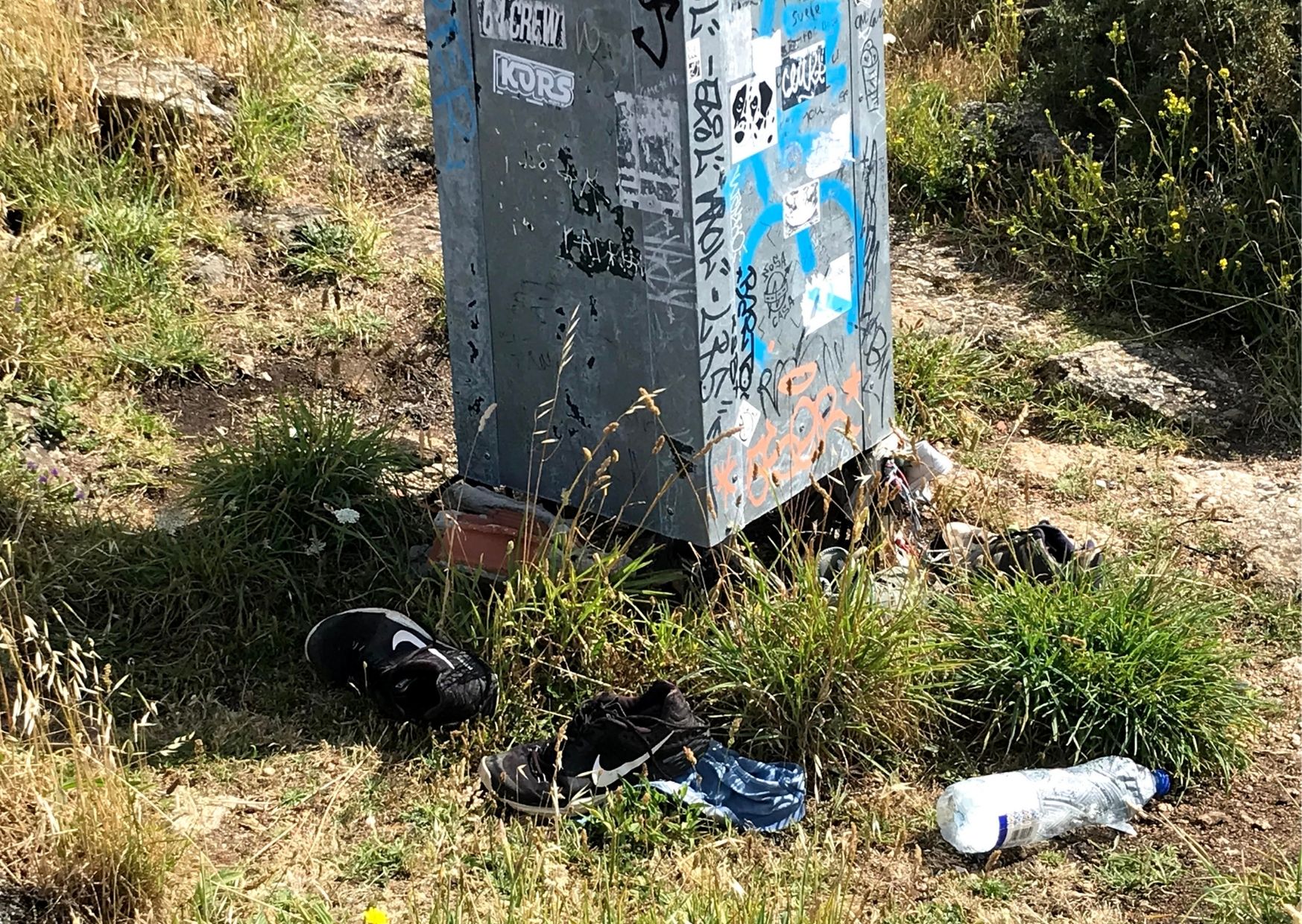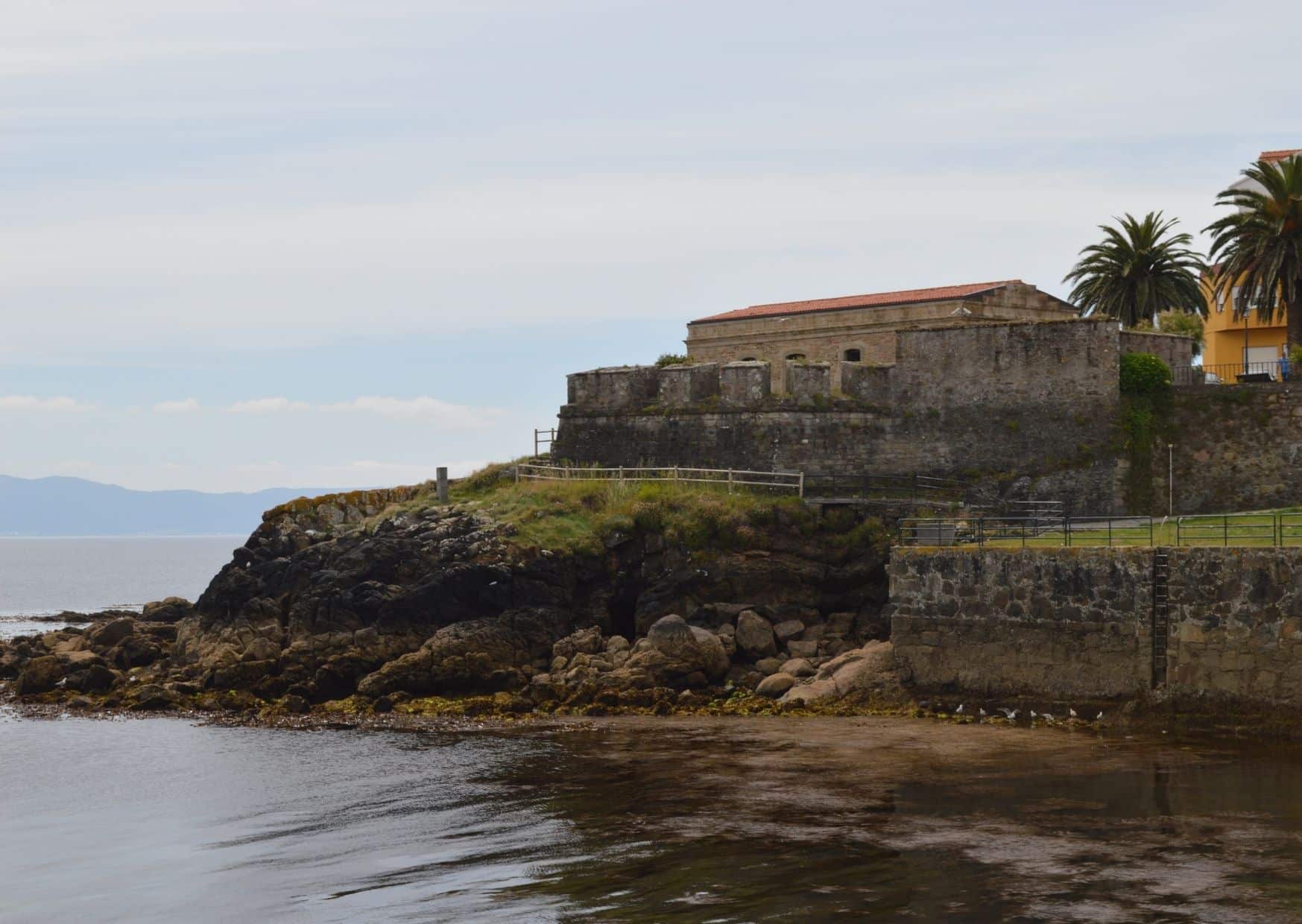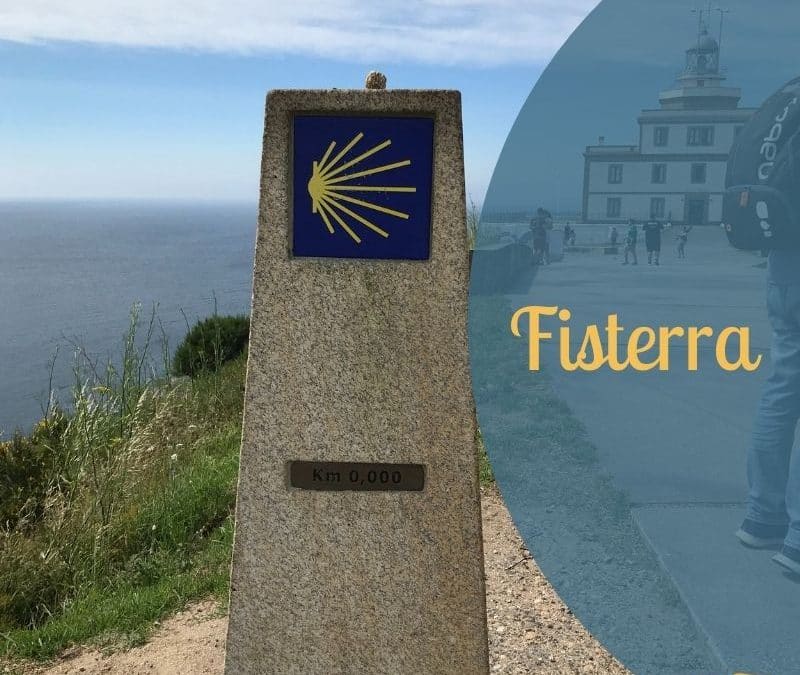Last weekend I was in Fisterra. Or is it Finisterre? And why do so many people end their Camino de Santiago there? Or in Muxía.
Let’s start with the name. Is it Finisterre or Fisterra? You may already be aware that Galicia has its own language, apart from Spanish. You can learn more about it in O Camiño de Santiago.
Both languages, Galician and Spanish, are used on a regular basis. Some people prefer one, some people prefer the other. And some switch from one to the other without even thinking. It’s common to see signs and documents in both languages. Same applies to town names, although the official name is the Galician one. So, in this case, the official name is Fisterra, but you’ll see Finisterre too.
Where is Fisterra?
Fisterra, or Finisterre, is on the Atlantic coast of Galicia, around 90km from Santiago de Compostela. When the Romans arrived there, they named it Finis Terrae (the end of the earth); it was the end of the known world and, for a very long time, it was considered the westernmost point in Europe.
The stretch of coast where it’s located is known as Costa da Morte (coast of death) because of all the ships that have been wrecked in the area.

Fisterra is a fishing village but it’s best known for the faro (lighthouse) at the tip of the cabo (cape).
The perfect location to watch the puesta de sol (sunset) over the ocean.
Why do people walk to Finisterre?
Pilgrimage to Fisterra is believed to have existed for centuries before Christian times. According to legend and tradition, Cabo de Finisterre (Cape Finisterre) was the location of the Ara Solis (altar to the sun). Pagan worship took place there even before the arrival of the Romans, who simply continued with the existing rituals.
According to one legend, St. James destroyed this pagan shrine and built a chapel in its place. But Christianity didn’t totally replace these ancient traditions. In many cases, both traditions have merged.
The Church promoted devotions to Mary in that region. As a result, we have the santuario (shrine) da Virxe da Barca in Muxía as well as the iglesia (church) Santa María das Areas in Fisterra. Pilgrimages to these 2 places were encouraged during the 15th-16th centuries.

In the Middle Ages, it was common for criminals to be sentenced to complete a pilgrimage to remote places. Finisterre was one of these destinations.
On the other hand, the symbol of a pilgrim to Santiago was and still is a scallop shell. In the past, scallop shells were sold in Santiago. But, why not walk to the coast and find your own? Arriving in Fisterra and el mar (sea) also symbolises the end of your pilgrimage, the beginning of your journey back home, a new beginning.
This brings me to a certain practice that has been banned for years but some people continue to do: burning your clothes or shoes at the end of the Camino. There is a notice there, quite visible as you walk towards the rocks behind the lighthouse asking you NOT to make fuego (fire) or leave anything that wasn’t there before (see the first picture on the left).



However, as you can see in the other 2 pictures, people are ignoring it and littering the place. The number of pilgrims on the Camino at the moment is far from what we would normally see around this time of the year. So I was shocked and disappointed to see several half-burnt pieces of clothing, as well as discarded shoes, bottles and other items.
You may think burning your clothes by the ocean at the end of your Camino is a very meaningful ritual. But please, don’t do it. It’s harmful to the environment and a fire hazard. It’s happened too many times before that the simple burning of shoes or clothing resulted in a forest fire.
So let me say it again: don’t burn your stuff!
It’s not cool. The locals are fed up with it. And you could be fined.
The town
I know the highlight of Fisterra is going to the lighthouse and watching the sunset over the ocean, but don’t forget to have a look around town too. Fisterra has always been a fishing village, so a visit to the port is in order.
And I would recommend a visit to the fishing museum that can be found in the castillo de San Carlos. The castle dates back to the 18th century and was built as part of a defensive plan for the coast in the area. The fishing museum is small but Manolo, the person in charge, is very knowledgeable and is full of amazing stories. Well worth the visit.
And if you like fish and seafood… you’re in the perfect place!

Castillo de San Carlos


Fishing museum

Today’s Spanish words
Fisterra
Finisterre
Costa da Morte
Faro
Cabo
Puesta de sol
Iglesia
Fuego
Castillo
Make sure you don’t miss any posts by subscribing for free here. That way, when a new post is out, you will get it in your inbox. And… you get access to exclusive content too.




Great explanation. Suggest not to swim in the ocean, many have died of shock due to the very cold water.
Thank you! Yes, that’s an important warning. The ocean is that area is quite dangerous. They don’t call it ‘the coast of death’ for no reason.